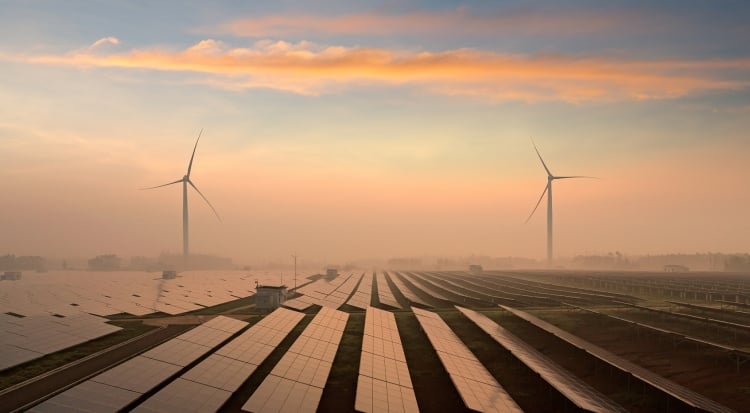
Solar and other renewables will generate more than half of all electricity in the UK by the mid-2020s according to a new study by Bloomberg New Energy Finance and Eaton, which expects the cost of the technology to more than halve by 2040.
The report, commissioned by the power management company in partnership with the Renewable Energy Association (REA), concluded that this will lead to much greater volatility in the power systems of the UK and Germany, which is expected to experience similar changes in generation.
Owing to the variable nature of solar and other technologies like wind, flexible power technologies such as energy storage will be at an advantage in helping to smooth the generation output of these technologies.
For example, the study – ‘Beyond the tipping point: flexibility gaps in future high-renewable energy systems in the UK, Germany and the Nordics’ – suggests that there will be some days and even whole weeks where the total generation from renewable sources is more than enough to meet power demand in the UK.
As early as 2030, it claims there will be whole weeks where wind and solar power generation exceed total demand at some point every day, with energy storage needed to control the excess electricity.
“This study shows that battery storage is well placed to serve short term supply and demand issues and highlights the dramatic cost reductions in renewable power over the past few years,” commented Nina Skorupska, chief executive of the REA.
However in contrast, a combination of low winds and cloudy skies could mean other generation sources will be needed to meet the majority of demand. This will mean the need for back-up capacity by 2040 will remain roughly the same as it is now and will result in long ‘gaps’ between periods with high levels of generation from solar and other renewables.
BNEF suggest such ‘gaps’ cannot be filled with demand response and current energy storage technologies, meaning a fleet of flexible resources will need to be maintained to meet these gaps. This would include gas generation, interconnectors and dispatchable renewable technologies such as bioenergy. In future, long-term storage solutions such as hydrogen may also come into play.
Albert Cheung, head of global analysis at Bloomberg New Energy Finance, said: “This study highlights a seismic shift in how power systems will operate in future. As wind and solar become the cheapest options for power generation, the race is on to develop and deploy the flexible resources that will complement them.”
“Massive increases in future renewable power generation mean that industry and government must start planning now to ensure low-carbon, cost-effective ways of balancing demand and supply,” added Skorupska.
The next phase of the study, to be released in early 2018, will seek to explore possible policy and technology responses to the challenge posed by the rising renewables predicted by the first part of the report.
Louis Shaffer, distributed energy segment manager for Europe, Middle East and Africa Region at Eaton, said this would analyse a number of possible approaches to dealing with the changing energy landscape of the UK.
“These solutions could include continued promotion of smart metering, reforms to increase market openness and transparency for all grid ancillary services and long-term grid service contracts and pricing schemes. We will also analyse the benefits of various policy options for the future of the energy market that include battery storage,” he said.
